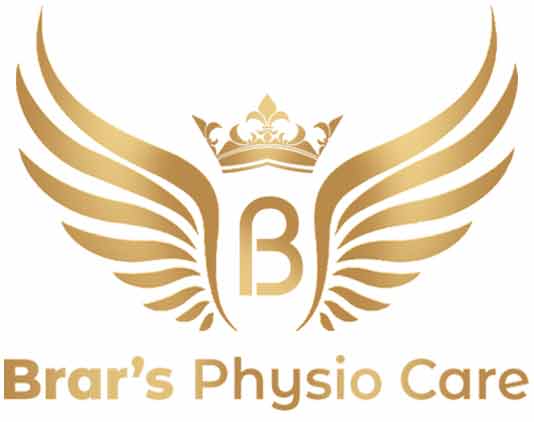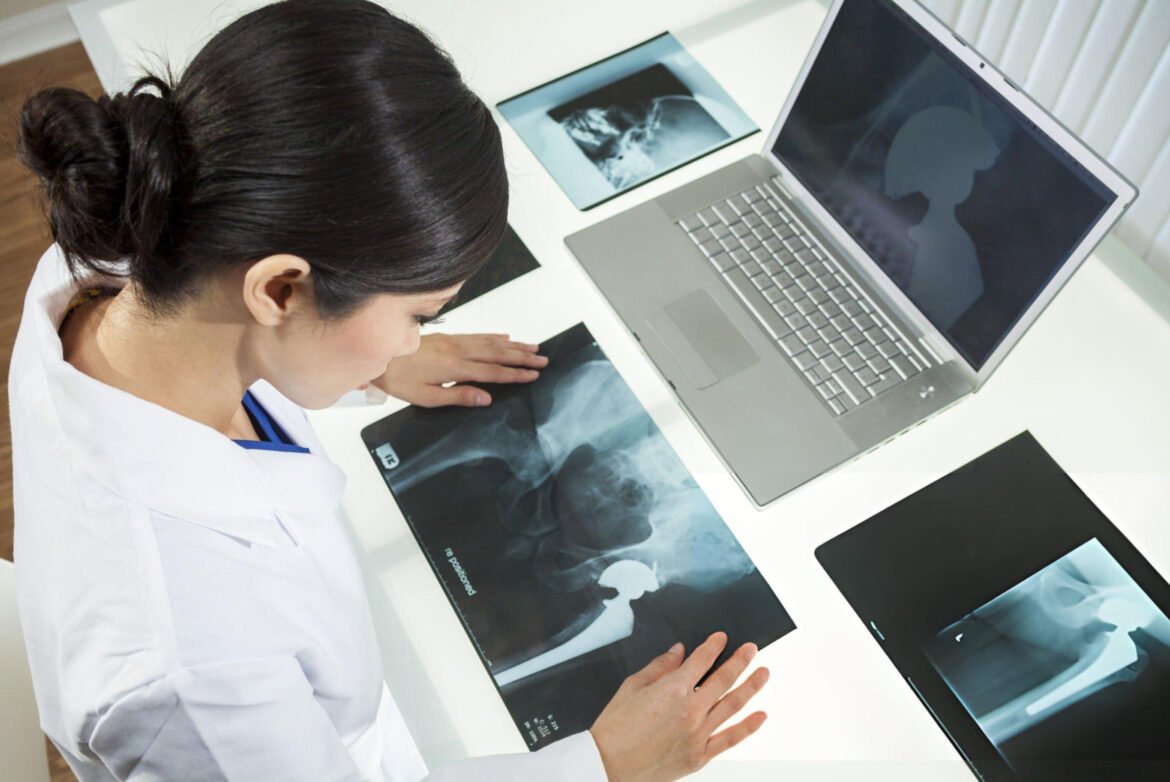05 Tips on Maintaining a Healthy Lifestyle after Hip Replacement
Introduction:
Hip replacement is a major surgical procedure that is often recommended to alleviate pain and restore function in patients with severe hip joint damage. Here are four common reasons why patients may require hip replacement surgery, as advised by the best physiotherapy centres in Chandigarh, Brar’s Physio Care:
-
Osteoarthritis
Osteoarthritis is a degenerative joint disease that commonly affects the hip joint, leading to the breakdown of cartilage. This results in pain, stiffness, and reduced mobility. When conservative treatments such as medication, physical therapy, and lifestyle changes no longer provide relief, hip replacement surgery may be recommended to restore function and alleviate pain.
-
Rheumatoid Arthritis
Rheumatoid arthritis is an autoimmune condition that causes chronic inflammation of the joints, including the hip. This inflammation can lead to joint damage and deformity over time. Hip replacement surgery can help patients regain mobility and reduce pain when other treatments, such as medication and physical therapy, are insufficient.
-
Hip Fractures
Hip fractures, often resulting from falls or accidents, are a common reason for hip replacement surgery, particularly in older adults. A fractured hip can severely impair mobility and quality of life. In such cases, a hip replacement can provide a stable and pain-free joint, allowing patients to return to normal activities.
-
Avascular Necrosis
Avascular necrosis (AVN) occurs when the blood supply to the hip joint is disrupted, leading to the death of bone tissue. This condition can cause severe pain and joint collapse. Hip replacement surgery is often necessary to replace the damaged joint with a prosthetic one, restoring function and reducing pain.
Advancements in Hip Replacement
Recent advancements in hip replacement technology have significantly improved patient outcomes, recovery times, and the durability of implants.
Key innovations include:
-
Minimally Invasive Techniques
-
Advanced Implant Materials and Designs
-
Enhanced Rehabilitation Protocols
-
Custom 3D-Printed Implants
-
Biologic Augmentation
These advancements are making hip replacement surgery more effective, less invasive, and more enduring, significantly enhancing the quality of life for patients in Chandigarh.
FAQs
1. What are the potential risks and complications associated with hip replacement surgery?
As the best orthopedic surgeon and physiotherapist in Chandigarh, we must inform our patients about the potential risks and complications associated with hip replacement surgery. While the procedure generally has a high success rate, some risks include:
- Infection: Post-surgical infections can occur at the incision site or deep within the joint, requiring antibiotics or additional surgery.
- Blood Clots: These may form in the leg veins (deep vein thrombosis) and can travel to the lungs (pulmonary embolism), posing serious health risks.
- Dislocation: The new joint can dislocate, especially within the first few months post-surgery, requiring repositioning or additional surgery.
- Wear and Tear: Over time, the prosthetic joint components can wear out or become loose, necessitating revision surgery.
- Nerve Damage: Although rare, nerves in the vicinity of the implant can be damaged during surgery, leading to pain, numbness, or weakness.
Proper post-surgical care and adherence to rehabilitation protocols significantly reduce these risks.
2. How long does the recovery process typically take after hip replacement surgery?
At Brar’s Physio Care, We emphasize that the recovery process after hip replacement surgery varies for each patient, typically ranging from 3 to 6 months for significant improvement.
Initial Recovery (1-2 weeks): Patients are encouraged to begin gentle movement and physical therapy soon after surgery to promote healing and prevent complications like blood clots.
Early Recovery (4-6 weeks): During this period, patients generally transition from walkers or crutches to canes, regaining mobility and strength. Regular physical therapy sessions are crucial for improving range of motion and muscle strength.
Intermediate Recovery (2-3 months): Most patients resume normal daily activities, although they should avoid high-impact activities. Continued physical therapy helps in restoring full function and mobility.
Full Recovery (6 months to 1 year): Patients can return to more strenuous activities, and the hip joint should feel much more stable. Long-term success depends on adhering to rehabilitation exercises and maintaining a healthy lifestyle.
Each patient’s recovery timeline may differ, and personalized care plans ensure optimal outcomes.
3. Are there any alternative treatments or interventions available for the conditions that may require hip replacement surgery?
At Brar’s Physio Care, we always explore alternative treatments and interventions before recommending hip replacement surgery. Depending on the severity of the condition, the following non-surgical options may be effective:
Medications
- Pain Relievers: Over-the-counter pain relievers like acetaminophen or NSAIDs (e.g., ibuprofen) can help manage pain and inflammation.
- Corticosteroid Injections: These can temporarily relieve pain and inflammation in the hip joint.
Physical Therapy
A tailored physical therapy program can strengthen the muscles around the hip, improve flexibility, and reduce pain. Techniques include exercises, manual therapy, and sometimes aquatic therapy for low-impact strengthening.
Lifestyle Modifications
- Weight Management: Reducing body weight can alleviate stress on the hip joint, thereby reducing pain and slowing disease progression.
- Activity Modification: Avoiding high-impact activities and incorporating low-impact exercises like swimming or cycling can protect the hip joint.
Assistive Devices
Using canes, walkers, or shoe inserts can help reduce the load on the hip joint and improve mobility.
Alternative Therapies
- Acupuncture: Some patients find relief through acupuncture, which can help reduce pain and inflammation.
- Supplements: Glucosamine and chondroitin sulfate supplements may provide some benefit in alleviating joint pain for certain individuals.
Minimally Invasive Procedures
- Arthroscopy: For specific conditions like labral tears, arthroscopic surgery may be an option. It involves a smaller incision and typically a quicker recovery than a full hip replacement.
- Osteotomy: This procedure involves realigning the bones to relieve pressure on the hip joint, potentially delaying the need for a hip replacement.
These alternatives can often provide significant relief and improve quality of life, though they may not be suitable for all patients. Individual evaluation and personalized treatment plans are essential for the best outcomes.
Why Choose a Brar’s Physio Care for Hip Replacement?
Opting for the best physiotherapy centre in Chandigarh for hip replacement surgery ensures access to expert care, advanced treatment protocols, and comprehensive rehabilitation programs.
Brar’s Physio Care provides personalized care plans, including pre and post-surgical physiotherapy, to ensure optimal recovery and improve the long-term success of the surgery.

Tips on maintaining a healthy lifestyle after hip replacement:
Maintaining a healthy lifestyle after hip replacement is crucial for ensuring a successful recovery and prolonging the life of your new hip joint. Here are five tips to help you stay healthy and active:
Follow Your Rehabilitation Program
- Physical Therapy: Attend all scheduled physical therapy sessions and diligently follow the prescribed exercises to regain strength, flexibility, and mobility in your hip.
- Home Exercises: Continue doing the recommended exercises at home to maintain progress and prevent stiffness.
Maintain a Healthy Weight
- Balanced Diet: Eat a nutritious diet rich in fruits, vegetables, lean proteins, and whole grains to support overall health and weight management.
- Weight Monitoring: Keep your weight in check to reduce the stress on your new hip joint, which can help prevent wear and prolong the life of the implant.
Stay Active with Low-impact Exercises
- Walking: Regular walking is excellent for maintaining mobility and cardiovascular health without putting excessive strain on your hip.
- Swimming and Cycling: These low-impact activities provide good exercise for your muscles and joints while minimizing stress on your hip.
Avoid High-Impact Activities
- Precautions: Refrain from high-impact sports and activities such as running, jumping, or heavy lifting that can put undue stress on your hip joint.
- Adaptations: Opt for modified or alternative activities that keep you active without risking damage to the implant.
Regular Check-ups with Your Surgeon
- Follow-Up: Attend all scheduled follow-up visits with your orthopedic surgeon to monitor the condition of your hip replacement and address any concerns promptly.
- Early Detection: Regular check-ups can help detect potential issues early, ensuring timely intervention and preventing complications.
By adhering to these tips, you can enjoy a healthy and active lifestyle while ensuring the longevity and success of your hip replacement.

